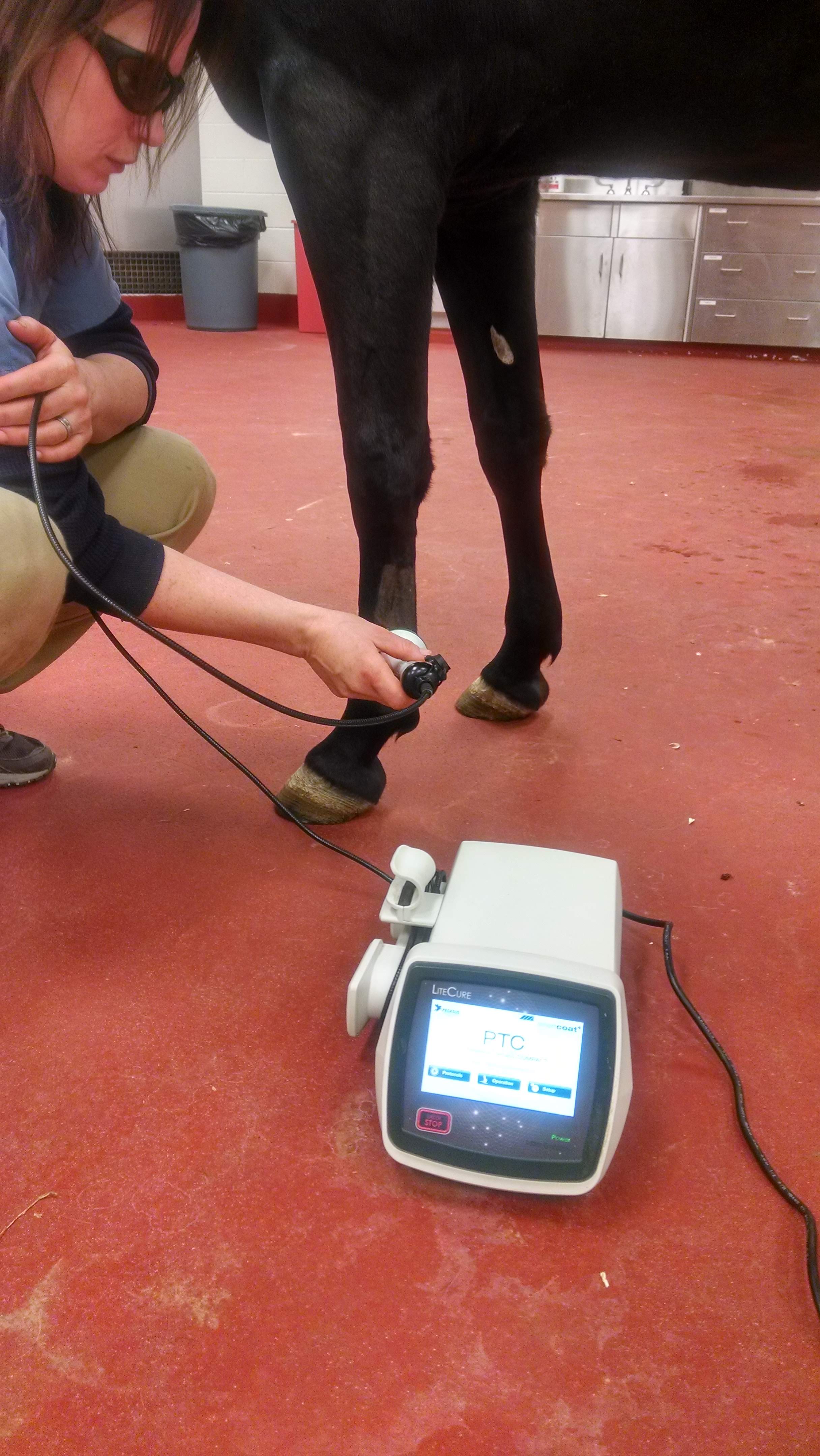Every little thing You Need to Know About Equine Therapy for Mental Wellness
Every little thing You Need to Know About Equine Therapy for Mental Wellness
Blog Article
Evaluating the Performance of Laser Therapy in Horse Treatment for Injury Recovery
The analysis of laser treatment's effectiveness in equine injury rehabilitation hinges on several aspects, consisting of recuperation time, discomfort reduction, and cells regrowth. Vets frequently observe superior outcomes with laser therapy compared to conventional techniques, positioning it as an important aspect in equine treatment. Equine Therapy.

Understanding Laser Therapy
Laser treatment has actually come to be an essential device in veterinary medicine, particularly in the therapy of equine problems. Understood for its non-invasive nature and effectiveness, laser therapy involves the application of specific wavelengths of light to boost cells repair service and minimize swelling. This therapeutic method is increasingly preferred for its ability to accelerate the healing procedure in equines struggling with a variety of musculoskeletal injuries and persistent problems.
The key mechanism behind laser treatment is its capacity to boost cellular features. Additionally, laser therapy advertises vasodilation, improving blood circulation and oxygen shipment to broken cells, thus quickening recuperation.
In equine medicine, laser therapy is especially valuable for conditions such as tendonitis, osteoarthritis, and injury recovery. The strategy is lauded for its pain-relieving homes, permitting equines to reclaim flexibility and function more quickly. Vets also value its minimal side results compared to other treatment methods, making it a reliable and safe choice for equine treatment.
Just How Laser Therapy Functions
To recognize how laser treatment functions, it is important to look into the interaction between light energy and organic cells. Laser therapy, additionally recognized as Low-Level Laser Treatment (LLLT) or photobiomodulation, utilizes certain wavelengths of light to pass through tissues and boost mobile processes. The mechanism pivots on the absorption of photons by cell chromophores, mainly within the mitochondria, which are important for power production.
Upon absorption, these photons trigger a collection of biochemical modifications, enhancing mitochondrial feature and bring about increased adenosine triphosphate (ATP) production. This increase in ATP accelerates cellular metabolism, promoting tissue repair and regeneration. Additionally, laser therapy modulates inflammatory responses by influencing cytokine degrees and lowering oxidative stress and anxiety, thereby alleviating pain and swelling.
Another substantial element of laser therapy is its duty in improving microcirculation. The therapy advertises vasodilation, enhancing blood flow and oxygen shipment to damaged cells. This helps with the elimination of mobile debris and sustains the proliferation of fibroblasts and collagen synthesis, critical for wound recovery.
Scientific Evidence
The efficiency of laser therapy in equine therapy has been confirmed with numerous medical researches, showcasing its restorative possible across a series of conditions. Numerous controlled tests and empirical research studies have actually documented considerable improvements in tissue fixing, pain decrease, and overall rehab timelines. As an example, a study carried out by Turner et al. (2012) showed that horses treated with low-level laser treatment (LLLT) for ligament injuries exhibited sped up recovery compared to those getting standard therapies. The study highlighted a marked decrease in swelling and boosted collagen formation.
In a similar way, research study by Johnson and coworkers (2015) concentrated on equine muscular tissue injuries, disclosing that laser treatment significantly quickened muscle fiber regeneration and reduced muscular tissue stiffness. These findings were substantiated by histological evaluations showing enhanced muscle tissue company. Professional assessments have actually revealed that laser treatment can alleviate chronic problems such as osteo arthritis. A study by Smith et al. (2018) reported that steeds with osteoarthritic joints experienced notable pain relief and enhanced series of movement following a routine of laser therapy sessions.
Veterinarian Insights
Vet experts have progressively recognized the value of laser treatment in equine treatment, pointing out both empirical evidence and direct experience. Dr. Jane Smith, a leading equine vet, notes that laser treatment has revealed impressive efficacy in lowering inflammation and accelerating tissue repair work.
Vets likewise value the convenience of laser therapy. She directs out that laser therapy can be tailored to the particular demands of each equine, making sure optimum outcomes.

Practical Considerations
A crucial element of carrying out laser therapy in equine therapy entails recognizing the useful considerations that guarantee its efficiency and safety and security. It is crucial to pick the appropriate laser device, as different kinds vary in wavelength, power, and penetration deepness (Equine Therapy). Veterinarians need to be skilled in these specifications to customize treatment procedures effectively to each injury kind
Moreover, the regularity and duration of laser treatment sessions require careful planning to take full advantage of therapeutic benefits while minimizing any type of possible unfavorable effects. Regular monitoring of the steed's response to treatment can assist required changes in the treatment routine. Developing a safe and controlled environment during treatments is additionally vital to avoid unintended direct exposure to laser exhausts, which can harm both the equine and the trainer.
Training and certification of workers administering laser therapy are extremely important to ensure correct method and to copyright safety and security criteria. Additionally, keeping accurate records of each session, consisting of laser settings and observed end results, is vital for reviewing the total performance of the therapy and for making data-driven decisions.
Conclusion
Laser therapy has actually become an effective method in equine injury rehab, offering substantial benefits in recuperation time, pain alleviation, and cells healing. Scientific researches emphasize considerable improvements in problems such as tendonitis and osteo arthritis, credited to enhanced cellular feature and click for more info increased ATP production. Vet monitorings affirm these searchings for, highlighting exceptional outcomes compared to typical treatments. For ideal outcomes, constant surveillance and customized treatment protocols remain vital in leveraging the why not try these out complete potential of laser treatment in equine treatment.
Report this page